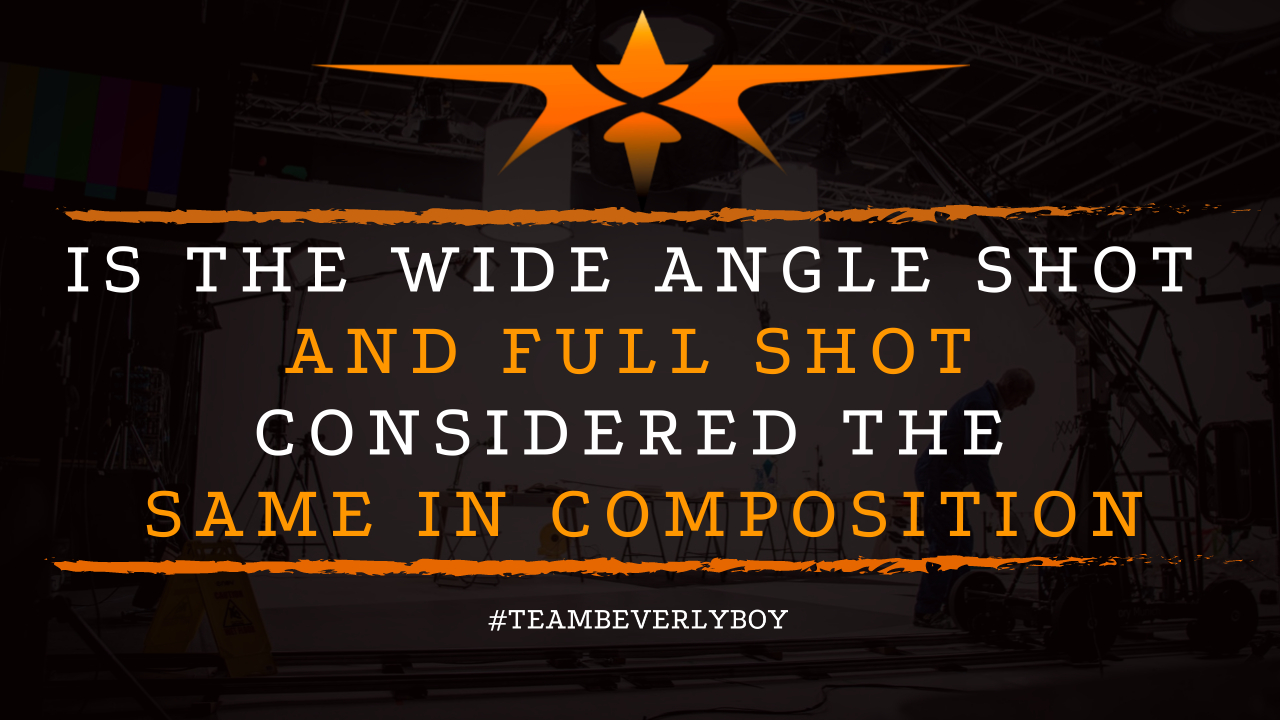
Is the Wide Angle Shot and Full Shot Considered the Same in Composition
Shot composition varies based on the style and types of shots that are being outlined or composed. Whether composing a sequence of shots within a scene, or otherwise preparing an outline of the different types of shots for a film. It’s important to understand the terminology and proper use of the various shots available to a cinematographer. You might be wondering. Is the wide angle shot and full shot considered the same in composition?

To help you understand how the wide angle shot, and a full shot, can be incorporated into your shot composition.
And to further address whether the wide angle shot and full shot is considered the same in composition. It makes sense to first break down what each shot is and what it means.
What is a Wide Angle Shot?
A wide angle shot represents a camera shot. Featuring a greater horizontal plane of action. And a greater depth of field than most shots.
To achieve the wide angle shot, the cinematographer might use a wide-angle lens. Which features a substantially smaller focal length than a normal lens.
The resulting effect is that the perspective when shot with a wide angle lens is exaggerated. So that objects that are nearby appear much larger and closer than they actually are.
And objects that are farther away will appear smaller. Further than they actually are. The wide angle lens will also create greater distance between objects in the focal plane.
The Long Shot
A wide shot, which may also be called a long shot or a full shot, is used by the cinematographer. To show the subject within the surrounding environment. Such that the audience can see who is in a scene, where it’s set, and when it takes place.
A wide shot, and a wide angle, shot, are not one in the same. The wide shot does not distort the view the way a wide angle shot, captured with a wide angle lens, can cause some exaggeration of the area as was discussed above.
What is a Full Shot?
A full shot, also called a wide shot, represents a full perspective view of the scene and the subjects within the scene. This shot is used to show the audience where a scene is set, who’s in the scene, and when the scene is taking place.
The wide shot, and the full shot, are one in the same but don’t confuse this with a wide angle shot which is slightly different and requires a special wide-angle lens to achieve.
Is the Wide Angle Shot and Full Shot Considered the Same in Composition?
If you’re preparing shot composition and you’re wondering, “Is the wide angle shot and full shot considered the same in composition?” The answer is NO! These two shots are not the same. However, a wide shot, and a full shot, are the same.
So, as you’re preparing your shot composition, make sure that you’re not confusing the two types of shots. A wide shot, and a wide angle shot. The wide shot, and the full shot, are the same. The wide angle shot, and the full shot, are not the same.
If a cinematographer wants to shoot a wide angle shot, using a wide angle lens, they will generally use it to exaggerate the area and in doing so objects that are close may appear larger than they are, whereas objects far away may appear smaller than they are.
This same exaggeration is not necessarily achieved with a wide shot, or a full shot, that uses a standard camera lens.


